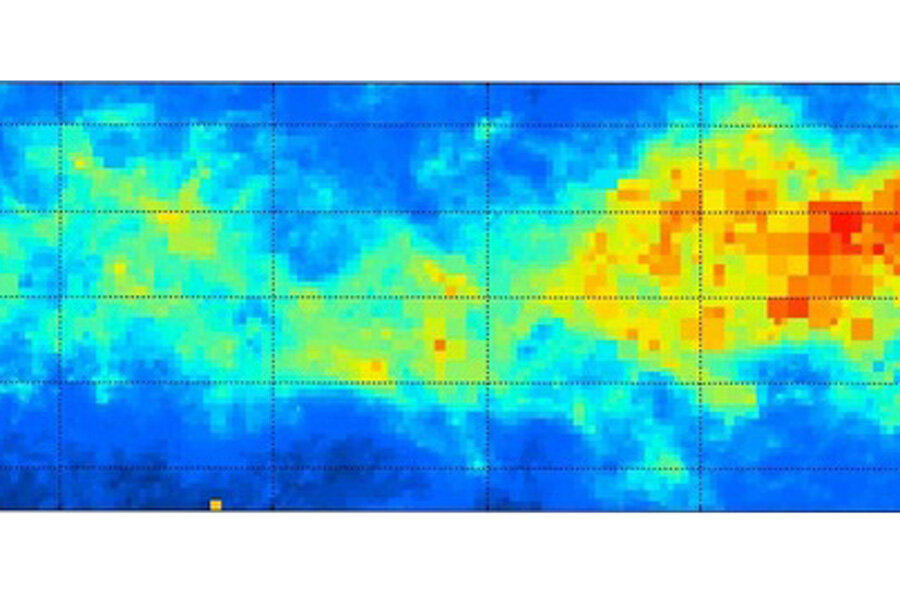How dusty is the Milky Way? 3D map shows galactic grime.
A new 3D map of the Milky Way galaxy shows the dust that permeates the galaxy in great detail.
Astronomers mapped the dust between stars in the Milky Way to create the colorful image, which covers the part of the galaxy seen from Earth's Northern Hemisphere. The dustiest regions of the galaxy are colored red, while lighter colors are less dusty.
Instead of measuring the galaxy's dust directly, the international group of researchers observed more than 38 million stars to see how much light from those stars is masked by dust. The map was produced by data gathered by the Isaac Newton Telescope Photometric H-alpha Survey of the Northern Galactic Plane (IPHAS).
"We can see a number of specific features, including the Rosette Nebula and the star-forming belt in the Perseus Arm of the Milky Way," Stuart Sale, who led the team that created the map, said in a statement. "Our location within the Milky Way means that we can study the ISM [interstellar medium] in far greater detail than for any other galaxy. The knowledge that we gain from studying our own galaxy can subsequently be applied to others."
The dust of the interstellar medium is shaped by flows, creating structures that are thousands of light-years across down to just hundreds of kilometers, representatives with IPHAS said in a statement. The new map of the Milky Way was presented at the National Astronomy Meeting in Portsmouth, England today (June 23).
"Because the solar system is embedded in the disc of the Milky Way, our view of it is choked with dust, with the result we know less about its internal structure than we do about some external galaxies, such as M31 in Andromeda." Janet Drew, the principal investigator for the IPHAS, said in a statement.
"In this northern survey, we are mainly looking at the parts of the galactic disc that lie outside the sun's orbit around the galactic center," Drew added. "This 3D map demonstrates with greater force than existing 2D maps that dust in the outer disc does not trace the Perseus spiral arm and other expected structures in a simple way."
Follow Miriam Kramer @mirikramer and Google+. Follow us @Spacedotcom, Facebook and Google+. Original article on Space.com.
- Our Milky Way Galaxy: A Traveler's Guide (Infographic)
- Our Milky Way Galaxy's Core Revealed (Photos)
- Milky Way Quiz: Test Your Galaxy Smarts
Copyright 2014 SPACE.com, a TechMediaNetwork company. All rights reserved. This material may not be published, broadcast, rewritten or redistributed.






